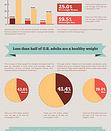A study recently published in the San Jose Mercury News suggests the parents of obese children do not perceive their children as obese. An analysis of this study, its methods, and its findings is an important exercise in understanding the meaning and relevance of all research. The ability to read research critically and understand how it was generated allows us to identify possible design flaws or to realize the validity of its conclusions and make appropriate use of the data.
The study was conducted through an internet research firm for the University of Michigan. Its goal was to determine the percentage of parents who realized their children are obese and to compare it to the percentage of parents that do not realize their children are obese. The participants were selected by simple random sampling and were considered a representative sample of American parents. The sample included 2060 respondents (Runk, 2007).
The data appeared to be collected through internet surveys. The study was observational and measured continuous data sets including the height, weight, age, and gender of the participant's children (Bennett, Briggs, & Triola, 2003). A body mass index greater than or equal to the 95th percentile in comparison to children the same age and gender was the criteria used for obesity in this study. The data from these children was then compared the national percentage of children considered obese by the same standards. Qualitative data pertaining to whether or not the parents thought their children were "slightly overweight, very overweight, or about right" was also collected (Runk, 2007).
Although it was not specifically stated, I hypothesize the children studied were broken down into bins by age and gender. The first bin comprised of obese girls six to 11 years old and the second bin obese boys six to11 years old.


